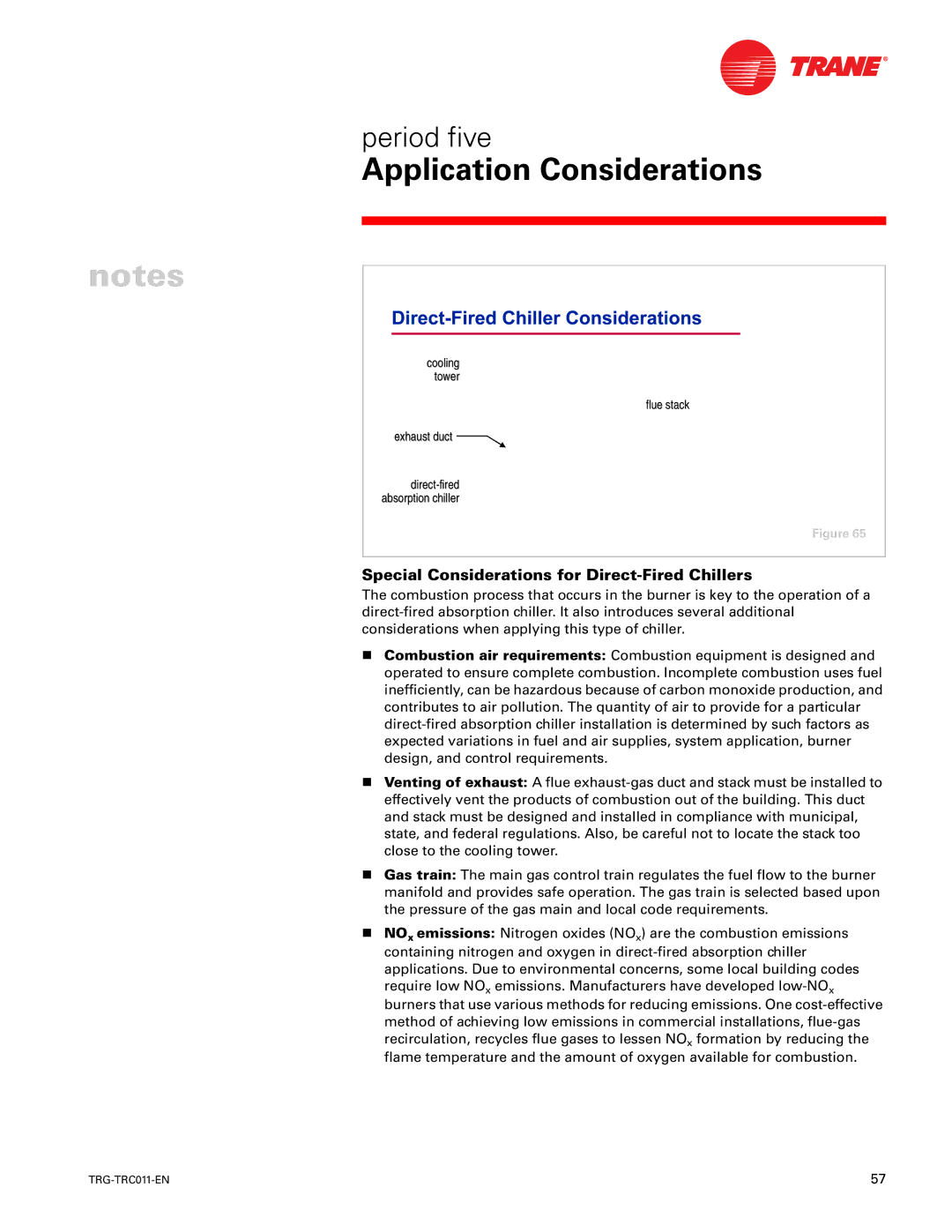
period five
Application Considerations
notes
cooling tower
flue stack
exhaust duct 
direct-fired absorption chiller
Figure 65
Special Considerations for Direct-Fired Chillers
The combustion process that occurs in the burner is key to the operation of a direct-fired absorption chiller. It also introduces several additional considerations when applying this type of chiller.
νCombustion air requirements: Combustion equipment is designed and operated to ensure complete combustion. Incomplete combustion uses fuel inefficiently, can be hazardous because of carbon monoxide production, and contributes to air pollution. The quantity of air to provide for a particular direct-fired absorption chiller installation is determined by such factors as expected variations in fuel and air supplies, system application, burner design, and control requirements.
νVenting of exhaust: A flue exhaust-gas duct and stack must be installed to effectively vent the products of combustion out of the building. This duct and stack must be designed and installed in compliance with municipal, state, and federal regulations. Also, be careful not to locate the stack too close to the cooling tower.
νGas train: The main gas control train regulates the fuel flow to the burner manifold and provides safe operation. The gas train is selected based upon the pressure of the gas main and local code requirements.
νNOx emissions: Nitrogen oxides (NOx) are the combustion emissions containing nitrogen and oxygen in direct-fired absorption chiller applications. Due to environmental concerns, some local building codes require low NOx emissions. Manufacturers have developed low-NOxburners that use various methods for reducing emissions. One cost-effective method of achieving low emissions in commercial installations, flue-gas recirculation, recycles flue gases to lessen NOx formation by reducing the flame temperature and the amount of oxygen available for combustion.

![]()
